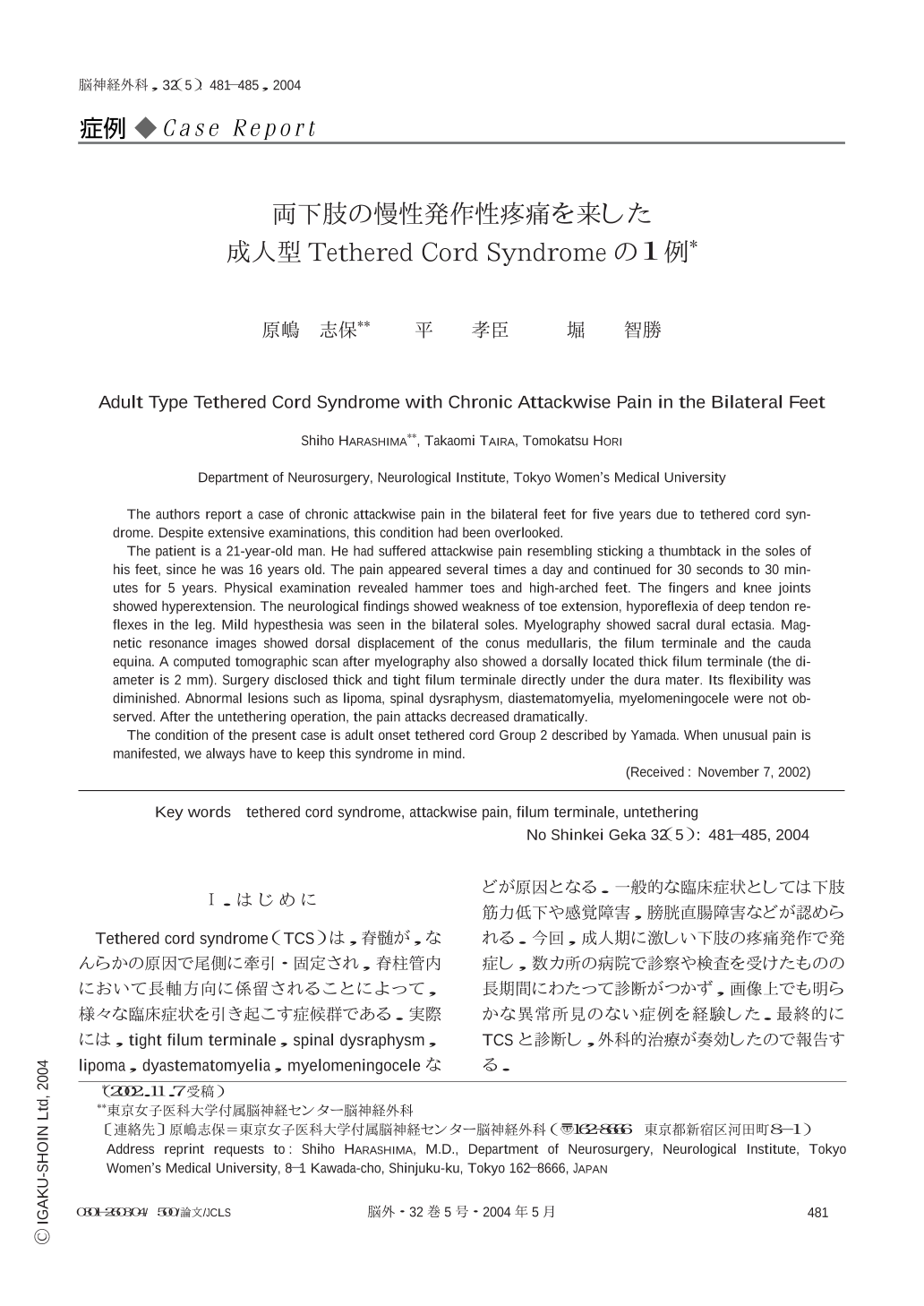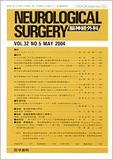Japanese
English
- 有料閲覧
- Abstract 文献概要
- 1ページ目 Look Inside
Ⅰ.はじめに
Tethered cord syndrome(TCS)は,脊髄が,なんらかの原因で尾側に牽引・固定され,脊柱管内において長軸方向に係留されることによって,様々な臨床症状を引き起こす症候群である.実際には,tight filum terminale,spinal dysraphysm,lipoma,dyastematomyelia,myelomeningoceleなどが原因となる.一般的な臨床症状としては下肢筋力低下や感覚障害,膀胱直腸障害などが認められる.今回,成人期に激しい下肢の疼痛発作で発症し,数カ所の病院で診察や検査を受けたものの長期間にわたって診断がつかず,画像上でも明らかな異常所見のない症例を経験した.最終的にTCSと診断し,外科的治療が奏効したので報告する.
The authors report a case of chronic attackwise pain in the bilateral feet for five years due to tethered cord syndrome. Despite extensive examinations,this condition had been overlooked.
The patient is a 21-year-old man. He had suffered attackwise pain resembling sticking a thumbtack in the soles of his feet,since he was 16 years old. The pain appeared several times a day and continued for 30 seconds to 30 minutes for 5 years. Physical examination revealed hammer toes and high-arched feet. The fingers and knee joints showed hyperextension. The neurological findings showed weakness of toe extension,hyporeflexia of deep tendon reflexes in the leg. Mild hypesthesia was seen in the bilateral soles. Myelography showed sacral dural ectasia. Magnetic resonance images showed dorsal displacement of the conus medullaris,the filum terminale and the cauda equina. A computed tomographic scan after myelography also showed a dorsally located thick filum terminale (the diameter is 2 mm). Surgery disclosed thick and tight filum terminale directly under the dura mater. Its flexibility was diminished. Abnormal lesions such as lipoma,spinal dysraphysm,diastematomyelia,myelomeningocele were not observed. After the untethering operation,the pain attacks decreased dramatically.
The condition of the present case is adult onset tethered cord Group 2 described by Yamada. When unusual pain is manifested,we always have to keep this syndrome in mind.

Copyright © 2004, Igaku-Shoin Ltd. All rights reserved.


